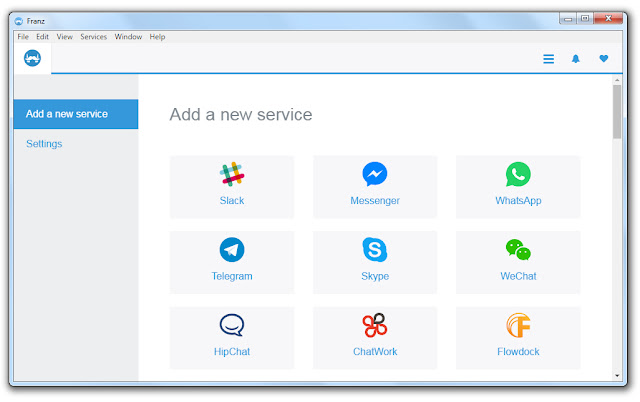Social Media and the UCSD Sailing Team
 The UCSD Sailing Team uses a lot of social media to connect with its followers. It has two Facebook groups, a Facebook page, email account, Google group, school run website, and two Twitter accounts. These various avenues off different opportunities and provide different information about how effective its outreach is.
The UCSD Sailing Team uses a lot of social media to connect with its followers. It has two Facebook groups, a Facebook page, email account, Google group, school run website, and two Twitter accounts. These various avenues off different opportunities and provide different information about how effective its outreach is.A few of these mediums are used more for communication than for promotion. For example, the team has a private Facebook group which is used to organize practices and meetings. However, it is also used to organize promotion. The team uses the other Facebook group and the Google group for its alumni, updating them on the team's results, how they can help give back, and about alumni related events. This can be seen as localizing some of our content to those who have a more intimate relationship with the team. Further the team email account is used for professional communication and as a long term address that people can use to contact the team, instead of constantly changing captain's email addresses. This leaves the Facebook page and the Twitter accounts as outlets for team promotion and marketing.
The Facebook page is the primary source of promotion of the team. It is the source of updates including photos, accomplishments, regatta results and more. It is where we broadcast our pride and receive commentary and support from our friends and family. One should note that this is different from the objectives of a for profit organization in using social media. Though similar in how the team strives to excite its audience, it is different in that in return the team only desires support, not increased sales, trust, or loyalty.
 |
| Facebook Graph Measuring Total Reach and Engagement |
In the graph on the right one can see a large jump in total weekly reach, and a measurable increase in the number of people talking about the page starting right after February 4th. So the question becomes, what happened here?
On February 5th the team posted incentives for its members to invite their friends and family to "like" the team page. The team responded very enthusiastically and managed to secure roughly 50 likes in this drive. This caused a boost in total viewership of our content to rise from 721 people from 1/29-2/4 to a peak of over 2,000 people for the range 2/5-2/11. As noted in other articles however, total likes or weekly reach isn't whats necessarily more important. The team also saw a jump in the number of people talking about the page comment. In January the team collected a total of 51 likes, 21 comments, and 4 shares on its content. So far in February the page has seen 79 likes, 8 comments, and 4 shares. The anomaly here being comments, but it should be noted a majority of those comments were on one post where people requested T-shirts and hoodies, not enthusiastically supporting the team.
In addition to this push for more followers, the page also increased the number of its posts. While in January the page published eight posts, five of which had photos. In February there have already been nine posts, four of which have photos. This increased rate in publishing brought the page into more people's news-feeds and provided more opportunities for engagement. From the data we can see that there was a positive response in engagement corresponding to increased number of posts.
So if that explains the rise in reach, what explains the subsequent dramatic fall after February 12th? Post that day the data shows the end of the "Like" surge, with no increased numbers of followers to the page. Additionally on February 10th the page posted a concluding post on a regatta that the team had just attended. With that in the past, the content posted was likely less interesting to the audience. Perhaps the drop could be seen as an end to the team's "newness" factor, where people's original excitement about the page fades, and they cease to check it for updates. However, there is no specific reason that can be gleamed as to what caused this dramatic drop.
 This brings us to the team's twitter accounts. There are two of them, the first is the team's official page, posting team related thoughts about the events we're attending, results, excitement about practices, and other sailing related commentary. The other is the team's unofficial page, the "Zombie Sailing Team", posting the thoughts of a sailing team of zombies (as all sailors have experienced showing up to a regatta exhausted). Both of these pages are new this month, and are spreading purely virally, with no team push to increase followers or re-tweets. While the formal page has found itself six followers and more regular updates, the unofficial page (while created more recently) is yet to garner as many followers. The goal of the Zombie Sailing Team page is to tap into viral marketing. Its creation was inspired by an "Ignite" talk by the creator of "The Oatmeal" (http://www.youtube.com/watch?v=QYyJZOHgpco). Though it is unclear how successful it will be, it is a work in progress.
This brings us to the team's twitter accounts. There are two of them, the first is the team's official page, posting team related thoughts about the events we're attending, results, excitement about practices, and other sailing related commentary. The other is the team's unofficial page, the "Zombie Sailing Team", posting the thoughts of a sailing team of zombies (as all sailors have experienced showing up to a regatta exhausted). Both of these pages are new this month, and are spreading purely virally, with no team push to increase followers or re-tweets. While the formal page has found itself six followers and more regular updates, the unofficial page (while created more recently) is yet to garner as many followers. The goal of the Zombie Sailing Team page is to tap into viral marketing. Its creation was inspired by an "Ignite" talk by the creator of "The Oatmeal" (http://www.youtube.com/watch?v=QYyJZOHgpco). Though it is unclear how successful it will be, it is a work in progress.


Comments
Post a Comment